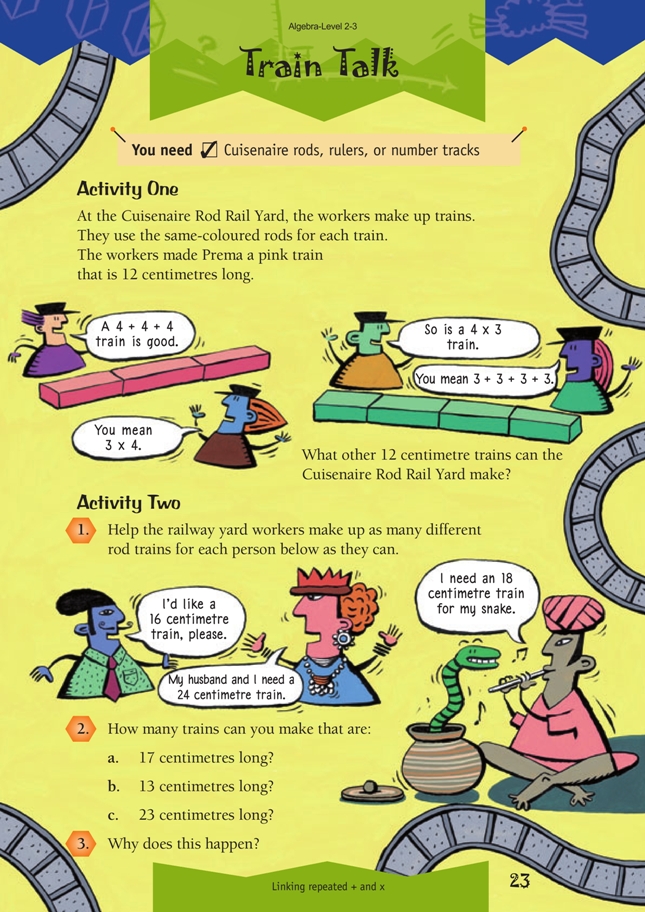This is a level 2 algebra activity from the Figure It Out series. It also has the achievement objective from the Level 2 Number strategies substrand.
A PDF of the student activity is included.
Click on the image to enlarge it. Click again to close. Download PDF (348 KB)
link repeated additon to multiplication
cuisenaire rods, rulers, or number tracks
Activities One and Two
The main focus of this activity is the relationship between repeated addition and multiplication. It provides another context for the activities given on page 21. Although many students will need Cuisenaire rods and rulers in order to confirm predictions, the primary purpose of the activity is to develop mental addition and multiplication strategies.
To this end, it is important that students predict which rods might make up a train of a given length and justify their reasoning before they build the train to confirm their predictions. Initially, students may record their solutions in rod pictures, which can be used to show the power of recording equations. For example, three students might record the information about their 18 centimetre train as:
By comparing these three methods during a discussion time, students will make the connection between the representations and appropriate oral description of the equation. For example, “Three multiplied by six tells you how much three sets/lengths of six come to.”
Note that the requirement to use only one type of rod in each train means that 17, 13, and 23 centimetre trains can only be built with unit cubes. This is because 17, 13, and 23 are prime numbers and therefore can only be divided evenly by themselves and one.
Answers to Activities
Activity One
12 centimetre trains: 6 x 2 centimetre rods, 2 x 6 centimetre rods, 12 x 1 centimetre rods
Activity Two
1. 16 centimetre trains: 16 x 1 centimetre rods, 8 x 2 centimetre rods, 4 x 4 centimetre rods, 2 x 8 centimetre rods
24 centimetre trains: 24 x 1 centimetre rods, 12 x 2 centimetre rods, 8 x 3 centimetre rods, 6 x 4 centimetre rods, 4 x 6 centimetre rods, 3 x 8 centimetre rods
18 centimetre trains: 18 x 1 centimetre rods, 9 x 2 centimetre rods, 6 x 3 centimetre rods, 3 x 6 centimetre rods, 2 x 9 centimetre rods
2. Answers need to include the fact that it is only possible to make one train for each length of 17 centimetres, 13 centimetres, and 23 centimetres,and in each case, that train is from 1 centimetre rods.
3. This is because these numbers have only two factors, themselves and one. They are prime numbers.
